Text
Once again I have Rosa Umineko on the brain. We know that the VN is just saying doing "self reflection through the other" all the way down, but I feel like Turn (aka Sayo's vent session) and the way she characterized Rosa is really reflective of her darkest thoughts. All the matriarchs represent being trapped in different cycles, self-inflicted or otherwise, but Rosa stands out to me among them for being the best representation of inevitability. Rosa's abuse of Maria is visceral, upsetting, and more importantly tied directly back to her own abuse at the hands of her siblings.
Rosa in Turn is a cog in the cycle of abuse, and probably the character portrayed as the least likely to actually escape from it. Maria is the witch of origins, creating something out of nothing, but Rosa is the witch of inevitability. Rosa has been abused to a degree that Sayo struggles to articulate, only to enact that same abuse-- almost identical as shown in the manga-- on her daughter. Rosa is (allegorically speaking) Sayo's worst outlook, the inevitability of passing on hurt to the people you care about.
As far as Turn is concerned, Rosa is destined to enact violence. She represents someone so beholden to their trauma that they are doomed to repeat it. Rosa is an exploration of Sayo's worst, most violent impulses. There is a reason that Turn is filled with gore and mistrustRosa, to Sayo, is an inescapable fate. Rosa is the person who couldn't move on from trauma, someone doomed to pass it on to everyone they love, a child in a woman's body who cannot be more than the violence inflicted on her.
When Sayo starts writing, she feels like Rosa-- and Rosa has never been someone that could have a happy ending. Sayo always tried to tell her stories through other people, to explore herself through their narratives and have everyone start to understand her through empathizing with the women she makes heroines. These narratives also serve as ways to understand herself, to reflect her own traumas and deepest feelings onto other people and learn how to feel about herself via proxy. That's why I always found it fascinating that Confession effectively confirms Turn to be one of the first things she writes.
Rosa is Sayo's capacity for violence, her hopelessness, the crying child she sees inside of herself. Rosa is a representation of a Sayo who can't heal-- who doesn't know HOW to. But this is one of the first people that Sayo tries to explore, to empathize with, to find herself in. Sayo has always been writing with the idea of a happy ending-- maybe they can solve the epitaph, maybe they survive. If Rosa can be happy, Sayo can be happy. But we know how Turn ends: she can't. Gold in hand, the person she loves most in her arms, she falls to the sea anyway.
Turn, to me, has always been the rawest feelings we've seen from Sayo. This is her writing her own pain, trying to find happiness in the person she sees as an inevitable monster. In the end though, she can't-- the wolf is doomed to kill by its own nature
#umineko#umineko spoilers#topic: sayo#rly rly rlyyy good#ive been thinking about rosa and sayo so much lately i really want to go back and mark down every comparison..#same growing up surrounded by ppl older than you. same codependent relationship w maria (nuance needed but yk). Youngest ushiromiya sibling#just the fact that rosa’s branch of the family has been the most intertwined with the beatrices drives me crazyyyy#kinzo and bice obviously and then rosa and kuwatrice and finally maria and sayo.. putting them all under microscopes and comparing them#on a surface level there’s also the fact that rosa’s outfit has the same color scheme as shkanontrices as well.. she rly is sayo’s bad end
156 notes
·
View notes
Text
Battler/Kinzo/Projection
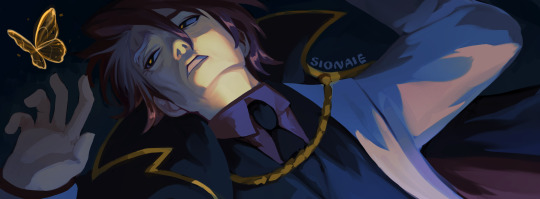
Battler’s narrative assault & sexualization is pretty interesting to me as an inversion of sexed roles, so I’ve decided to refine and paste some of my thoughts on it, beginning with Yasu-trice. Battler repeatedly has Kinzo’s (amatory) role projected onto him, both by Piece-Beatrice directly and Yasu’s authorial insinuations. (I won’t incorporate Meta-Beatrice into this analysis for a few reasons, the main being that I don’t think she is Yasu in the same sense as the others; secondarily that she is so gratuitous in her assaults and references that it would be nonsensical to lend any nuance to it. Plus, her indiscriminate performance in the earlier episodes is what sets up such a divergence later on)
I. Episode 4
Gameboard events are a requisite to understanding the skeleton of the stories that we’re actually being shown. Given the nebulous nature of the Meta and what it represents, a tale created and decorated in-universe in an attempt to communicate is generally more useful in viewing its subjects. On that note, the end of Episode 4 is a scarce instance where we are given a physical interaction between Piece-Beatrice and Battler. As Battler stands before the balcony denying her riddles and threatening her, Beatrice doubles down on her stern insistence regarding ‘testing’ him as the Successor, yet engages in innuendo the second he attempts to physically approach her. This presents a noticeable incongruence between Beatrice’s projected mythos and Piece-Beatrice as played by Yasu. She is physically distant, reading as almost shy. She’s stepped down from being an active harasser, instead functioning passively and reactively, ungracefully shifting between goals for the conversation. She is clearly very alienated from an autonomous sense of eroticism, which is why she instead endeavors to lure it out of him (despite her performative disdain). Her drunken sexuality is framed in relation to what she thinks hides ‘within’ Battler; her musings are based on the assumptions regarding <The Head>. She arrogantly asserts that her superficial form is his type, making sure to paint it as a shallow preference she’s pinpointed. (However even this is something she already knows as a fact, erasing any chance of the ‘unpredictable roulette’ she seems to exalt. She has little real confidence in her desirability, and even less in her ability to make him remember his sin)
She continues her attempt at testing his resolve, presenting herself for her ‘new master’ to own her flesh and soul as furniture, victimize her into surrender, and, crucially, remind her of Kinzo. Because that’s what Battler is to her: a reincarnation of Kinzo, carrying his spirit and blood most strongly. And how could he be anything else? Yasu is ‘Beatrice’ incarnate, her predecessors being both swept away and brutally betrayed by Kinzo, and by virtue of Battler’s failed promise, he has done the same. Her conflict arises here: her love for Battler meshing with her repulsion towards Kinzo, and her inability to reconcile them as full people. The same assumptions about Kinzo’s relationship to preceding Beatrices that traumatize her into hatred are simultaneously twisted into a romanticized ideal, and she is continually unable to conceive of her relationships without paralleling these identities and dynamics she’s latched onto. She is an ancestral fatalist, resigning not only autonomy within her own life but puppeting her relatives’ souls as her own. They cannot sleep peacefully as themselves, and neither can an unadulterated Battler. Beatrice indirectly castigates Battler (or her idea of him blurred into Kinzo) through her earlier ramblings on the nature of love-as-lust and the cage of flesh, but later turns around and flirts with the ideas, even going as far as writing her piece to romance Kinzo directly, despite knowing she’s caricaturing her own mother’s harrowing circumstances.
II. Message-Bottle Furniture
Lovelessly—or, perhaps, in a twisted abundance of love—Yasu’s message bottles distort Battler’s entire character into something alien in his six-year absence. This is what it means for new truths to triumph over old truths. Battler, the boy who left his own family due to his indignation over infidelity and who sought the heart in every story, is suddenly a perverted beast. He is a vapid womanizer like his father and an exploiter of status and naïveté like his grandfather. Beyond his will, parodied projections of his profanity are exposed within the message bottles, existing to cement his sin as irredeemable. I believe this is both a semi-conscious self-justification on Yasu’s part (cutting out the moral ambiguity of him simply forgetting) and a way to cope with her own undesirability (by manufacturing a more ‘active’ sin, one that would require Battler to care in the first place).
(…Side Note: I like how the attempted grope of Shannon in EP1 encompasses both this hostile projection and a dance around the desire to be discovered… [Fake breasts]. It adds another layer of selfish assumption to her narrative: he was always a piece. He doesn’t solve the epitaph and he doesn’t remember her because he never had the chance.)
To reiterate, his character is degraded and he is manipulated as a plot device within the message bottles. The narrative hinges on his existence, yet he has little room to move—In fact, his actual presence is hardly necessary. He committed a sin that permanently scarred someone, and he cannot apologize. The victim no longer exists. Battler, as a concept, constitutes a motive for murder. In his absence, he is a myth.
Remind you of anyone else?
III. Kuwatrice-Kinzo / Chick Beatrice-BATTLER
This parallel creates an interesting issue. The line of descendant/reincarnation is blurred and there’s an explicitly incestuous tone, but it quickly becomes more of a foil than a mirror. Kinzo’s idea of reincarnation is pure delusion, Battler rejects it despite it being true; Kinzo is affectionately dominating, Battler is cold; Kinzo rejects his status as a father, Battler grows to accept it.
So, Kinzo’s role is subverted. This should be a good thing, right?
It isn’t. At least, not to the judge of sin.
Chick-Beatrice is not a new creation; this is a glimpse of the Beatrice that first adopted Shannon’s bud of love for Battler six years prior. At this point, ‘Beatrice’ was still individuated. She wasn’t yet mutated by the legend of the witch, the solving of the epitaph, or, arguably, her Battler-desirability complex. This, I assert, is the closest we see to a pure ‘Yasu’ in later years, as the remainder of her true self that resided in Shannon had already been compartmentalized by that point. This is why Dawn is so tragic. Battler has allegedly solved her heart, yet even in his ‘enlightenment’ he is dismissive of her. To the first-time viewer, this rejection is bittersweet: he is waiting for the ‘real’ her to return. Issue is, that is the real her. This is the ‘Shannon’ he knew, before she was twisted into a sadistic amalgam of escapist fantasies dressed up with his desires. By all rights, Chick should align much more with the ‘Shannon’ that loved Battler. The dutiful “blindness of a girl in love,” willing to wait a century to be noticed. But he doesn’t understand that, bemoaning being too late while literally being thrusted another chance to do it right. Of course this chance doesn’t apply to reality, but it never did. He was already facing a postmortem trial for his failure in life, and the end of Meta-Beatrice marks his failure in death.
Battler is fated to only ever have a paternalistic, sympathetic affection towards Chick. Even after learning the truth, it will always be Beatrice that he loves. As much is clear in his Twilight gameboard. He recognizes Yasu as a vessel, but she’s virtually indistinguishable from Piece-Beato, an actor serving as the means for the illusion and providing a sympathetic backstory. Ange was right—there’s no point in having someone love in your place.
Regardless, Battler is himself. If he’d only inherited enough of Kinzo’s blood, maybe he could have loved all ‘iterations’ passionately and indiscriminately. Kinzo fabricated connections out of nothing, he ‘understood’ the reincarnated soul, and he was willing to die before he let her escape. His overbearing, cloying affection had a certainty that I believe Yasu envied, in a way. To be kidnapped and caged forever would be morbidly romantic, to her at least. How tragically ironic that the fatalist who desired to be carried away ended up having to orchestrate the game of love&communication herself…
IV. The Head
Aside from what I’ve mentioned, Yasu has a final, strikingly obvious reason to project Kinzo onto Battler: deflection.
Yasu is a disastrous parallel to Kinzo. They share the disturbing quality of willpower exceeding their body, a flippancy regarding life and death, living in spite of frailty. They are born with and die with nothing. She too dances with the magic of the roulette, staking fate on a miracle. She too ‘met’ Beatrice as an attempt at severing her regrets in life; she too summoned the Golden Witch and received a fortune at the cost of her soul; she too felt blessed and mocked by the myth of Beatrice, after wandering half-dead in a life that was not her own. A life in which she had been suddenly given power as a prank of fate, with the included (mis)fortune of polydactyly. They were each forced to endure Endlessness, awaiting the revival of love that may never come, desperately discarding their dignity for the sake of resurrection. The epitaph chooses both Kinzo’s and Beatrice’s successor. To ‘see’ is to answer the riddle. Just as Kinzo did to ‘Beatrice,’ Yasu has sewn the Ushiromiyas’ souls onto the island with magic, allowing them neither power nor form. Both are vulnerable kings protected by their own castles, refusing to speak the truth. Their massive wealth will be distributed, but the secret tales die with them.
Yasu was afforded unbelievable power by solving the epitaph, but it ended up destroying her with knowledge she did not want. She was given the reasoning that kills love. Upon the horrific discovery that her romantic feelings not only couldn’t be consummated but were incestuous as well, it is almost certain that she would feel the same repulsion towards herself as Kinzo. From that moment, she too was lying about the true nature of her relationships with the ones she loved. She too could not curb her affection or fear in time to tell the truth. There is no path she can make for herself, as she cannot live independently of projected roles. Incapable of individuating herself from Kinzo with self-identity, the logical conclusion is to invert the roles and make herself Beatrice, and more importantly, Battler Kinzo. Then, she must pray for the miracle that someone would come and solve the epitaph, taking back the role she was so haunted by and carrying her to a better life…
#lovely analysis.. the last bit especially#the way she falls back on the roles of beatrice/kinzo as an inevitability (as a blueprint in actuality) for all her relationships..#and she absolutely does not want to be the kinzo. One part of why kanon had little to no chance in the duel.. he’s the least Beatrice to he#bc ofc it all gets tied up in her views about gender as well.. really really great#umineko#umineko spoilers#topic: gender#topic: narratives
110 notes
·
View notes
Note
if you don't mind, could you elaborate on what you mean about ep 7 tea party? (your blog is great btw, i've pretty much just finished umineko and i've been really enjoying reading it)
hi, thank you sm this is so nice! im guessing youre referring to the tag on the last post i rbed lol
the ep7 tea party is what is taken to be the #truth of what happened on rokkenjima by most people. and i agree that the actions that took place there are likely the same. but the way that events are presented + the bias of the narration are filtered thru eva's memory and experiences, which is something i havent seen a ton of people account for. bern says that the tea party has no game master but to me that just means theres no Game being played. theres no magical obfuscation taking place, and there's no room to hypothesize abt what really happened (ange and lion are chained to chairs in a theatre, not sitting in the tea room in purgatory) but there's still a biased narrator telling the story, just like every "theatergoing" event in ep7 is not the exact truth but instead filtered through each character and they can choose to omit information or present it in a different way (see: guts scene in the tea party). for instance i know tht at some point the narration just stops referring to kyrie by name and just calls her "the murderer" which to me reads as a very obviously Not impartial narrator being the one to tell the story. this is how eva, the sole survivor of rokkenjima and thus the one free to decorate her tale, sees kyrie. it's why evatrice says her Shinjaeba line right before it opens and why bern's red that "that this is all truth is not necessarily so" holds up
#.me#.ask#topic: narratives#umineko#umineko spoilers#ofc this is just my interpretation but it can be baffling to see ppl take evas word for ppls behavior etc when we've seen how Magic works#the sole witness/survivor of an event gets to choose how they want to share that event. this is true of every story in ep7 (ex: kinzo)#also sorry if this is kind of incomprehensible i just woke up lol
31 notes
·
View notes
Text
everyone's experience of reality is subjective, except for ushiromiya eva's, which is ontologically correct
20 notes
·
View notes
Text

24 notes
·
View notes
Text
in the ep2 tea party, the narrator (yasu) talks about how becoming an adult means being able to overcome your childhood trauma, and thus rosa couldn't become an adult. this assumption that becoming an adult = good tells us a lot about yasu's mindset!
child yasu was desperately lonely and felt like an incompetent and unlovable person. the only people who were kind to her were, you guessed it, adults (shannon, kumasawa, genji, nanjo, even kinzo). so all yasu had to comfort herself was "when i grow up and become just like shannon, then i will be lovable, and i'll also be capable of being kind to and loving others."
but, well, you get where i'm going here: yasu cannot physically go through puberty. she gets incredibly distressed when she realizes she's not developing into the adult that she so wanted to become, who'd be beautiful and loved, and could be gracious, kind, and love in return.
the only way she can become happy is through magic - by tricking people into believing the illusion that she's an adult - because to yasu, being an adult means you are capable of love (in this case sex. capable of sex. let's not be flowery as this is a massive part of her trauma.)
for her, she can never escape her childhood trauma of feeling unlovable both figuratively and literally, because she can never become an adult, or...let's phrase it in umineko terms, become a "Human."
for characters with human and witch forms, like eva, the human is the adult while the witch is a child. it's an ongoing theme in the series - also see: ep1 where they discuss how young girls create witchsonas, and it's an important part of childhood, but they grow out of it.
a lot of rereading umineko is translating fantasy language into reality, so you can read "furniture" as yasu, in mystery terms, describing an eternal childhood without any hope of becoming an adult. yasu, in fantasy terms, might call that being the "endless witch."
just like how rosa talks about how she feels like she's been pretending to be an adult her whole life because that's what she has to be, so does yasu know she can't become an "adult", mentally, by overcoming her childhood trauma, or physically, by going through puberty.
but she still has to keep up the illusion that she is human/an adult in order to be allowed to exist in society (conformity and hammering out any rebellion or undesirable bits is also a marker of adulthood, like how eva admits she got over her dream of being a female head when she grew up.)
an interesting point about shannon and kanon is they're both supposed to be 16, however, shannon isn't referred to as a kid, but kanon constantly is.
and well, we know it's because shannon has gigantic boobs, marking her as an Adult Woman, while kanon is a frail boy who doesn't have any muscle at all...so he's just a boy. in ep2, shannon even gets the marriage subplot, because that's a TANGIBLE marker of adulthood, right? to get married? meanwhile, kanon gets to...go to the high school's school festival.
way to show the contrast for Mature Adult Shannon (who is only seen that way because yasu uses magic and pads her chest) versus Small Immature Child Kanon (where yasu DOESN'T use magic to change her body and perception of her "adulthood")
shannon's subplot with george is all about their future and devotion to each other (let's ignore any trauma about being furniture that'd prevent that here! power of magic!) meanwhile, kanon's subplot with jessica is A L L about his trauma of being furniture.
also, in a cruel twist of irony, when shannon calls herself furniture using magic, george doesn't take it seriously. but letting that get to you would be childish/furniture-like so shannon acts like she doesn't care. while jessica insists kanon is Human, and kanon flips because he's allowed to be childish and touchy about his trauma about being furniture and he CAN'T BECOME HUMAN BECAUSE HE'S NEVER BECOMING AN ADULT, STOP RUBBING IT IN HIS FACE.
so, talking about shannon/george vs kanon/jessica
shannon/george is the expected pairing for yasu. shannon's an Adult Human Woman who's socially acceptable in her femininity and doesn't show her childhood trauma.
while kanon wasn't meant to be lovable - he's the boy who barely had any time to live! he's her furniture self who has accepted he can never grow up into an Adult Human. he's her child self who will always retain her childhood traumas: being incompetent, unlovable, unable TO love.
so, jessica upending all of yasu's expectations by showing interest in him is like...she cracked the glass of yasu's small, confined world. jessica couldn't break the glass, but even that little bit was enough for yasu to do something she usually tried to avoid: take HUGE risks by starting to pursue a relationship with jessica as kanon.
love between furniture and humans is forbidden: in yasu-speak it's like a relationship between an adult and a child. it's that level of forbidden. not just forbidden, in fact, but reprehensible. so of course human-furniture romance is doomed to fail.
according to yasu, any normal human would, and SHOULD, on a moral level, reject furniture if they know the truth, and it's wrong for furniture to lie to humans while knowing the truth that's why beatrice the evil witch has to tempt shannon into using magic and lying so that she could pursue love.
18 notes
·
View notes
Text
zepar and furfur…save me zepar and furfur
1 note
·
View note
Text






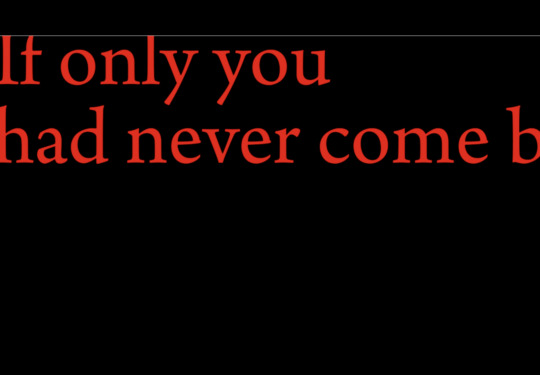



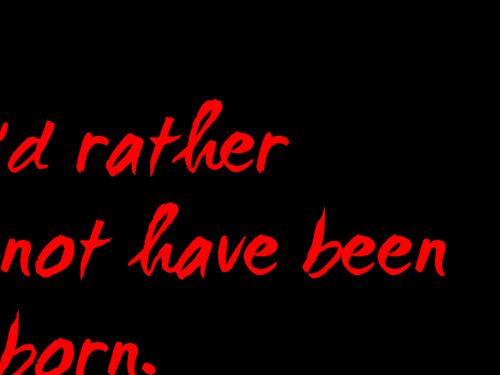
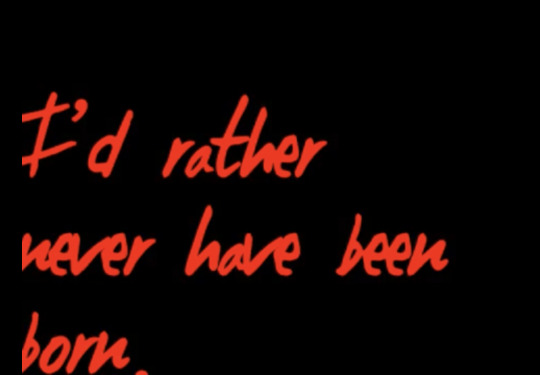
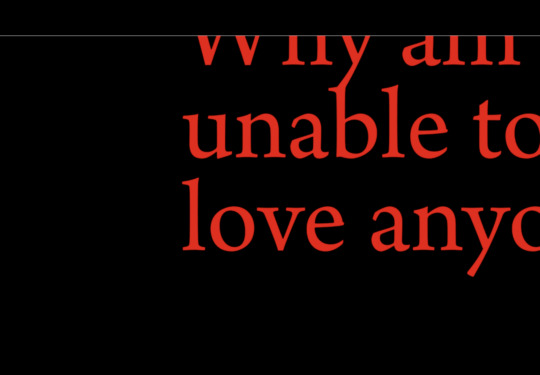

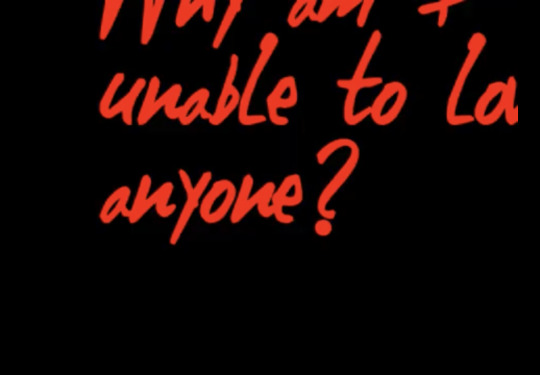
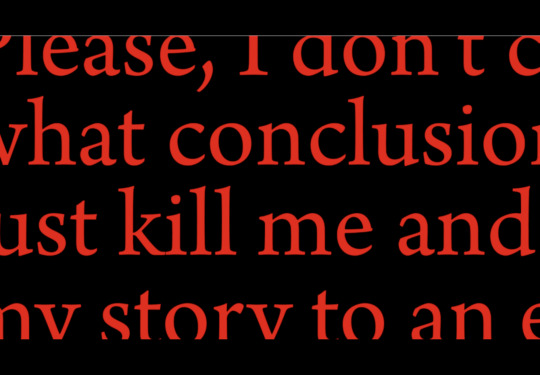
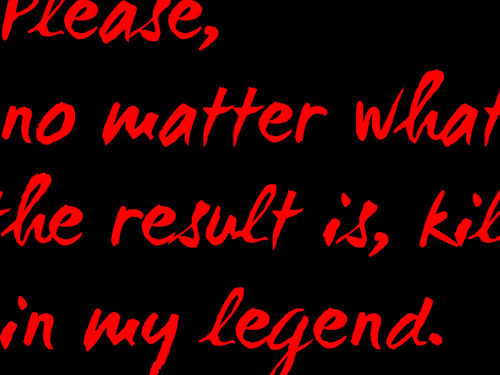
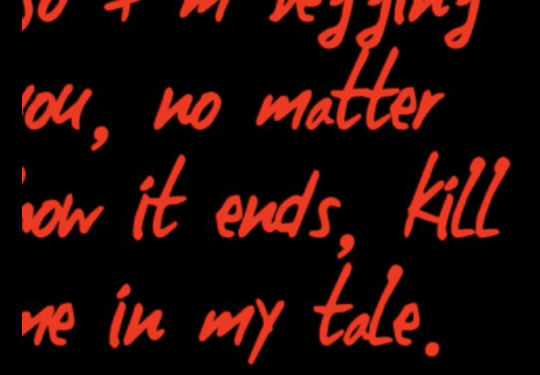






umineko project / witch hunt / steam release translations of the red text at the end of episode 4
#umineko spoilers#umineko#to me this is proof of confession of the golden witch’s existence validated by the vn itself. at some point sayo put her feelings to paper.#though having ikuko happen to find the bottle is. lazy. to me. as a non i=s believer#anyways about the text itself…probably the most obvious difference between the translations is number 3#if only you had never come back vs. if you don’t come back is a pretty big change… what i’d give to know japanese </3#my best guess is that it could be taken either way since parts of the text are cut off at the borders? otherwise why wld there be this gap.#.me#topic: sayo#also ppl confused at number 5 (sayo very clearly Loves) refer back to the angry rant beatrice did at shannon in ep2 about how love = lust#like i swear any time ur lost abt something relating to sayo u can just say ‘it’s about sex’ and you would be right in some measure
56 notes
·
View notes
Text
bern is great at making her lies seem believable but the lies themselves suck. like i wish she was better at it bc it wld really have been awesome to believe the same exact thing wld have played out in lion’s world in the ep 7 teaparty but her dumb story is too filled with holes so now i know she’s just a hater beyond all haters
#.me#umineko spoilers#this also counts towards the lie to ange in ep 4 like if ange was any less miraclepilled she’d be on top of how bullshit it was#similar to how lion was emotionally wrought after all of ep 7 and the tea party so bern took advantage and Lied Horrendously#thinking abt umineko at 8 am the grind never stops *trips falls dies
2 notes
·
View notes
Text
very much agree…i think for a lot of ppl it comes from the ep 7 manga wherein the scene right before the play when will says “this is the culprit” has sayo depicted with long blonde hair


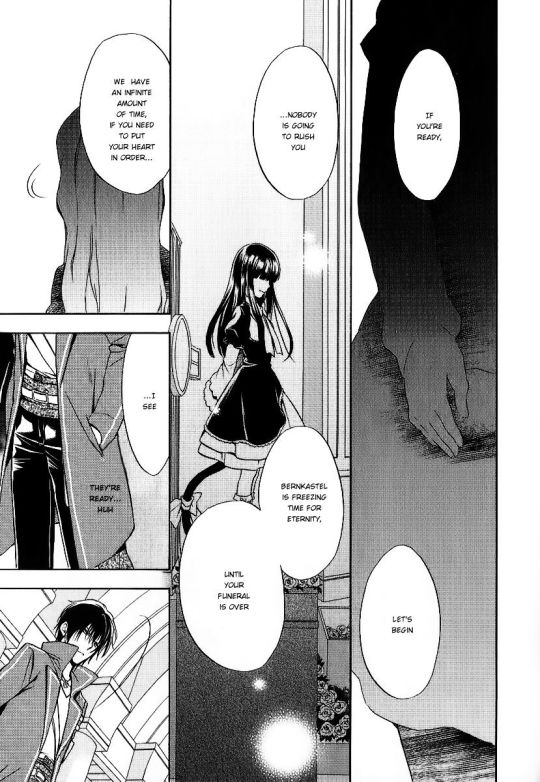
+ during her “yasu” period
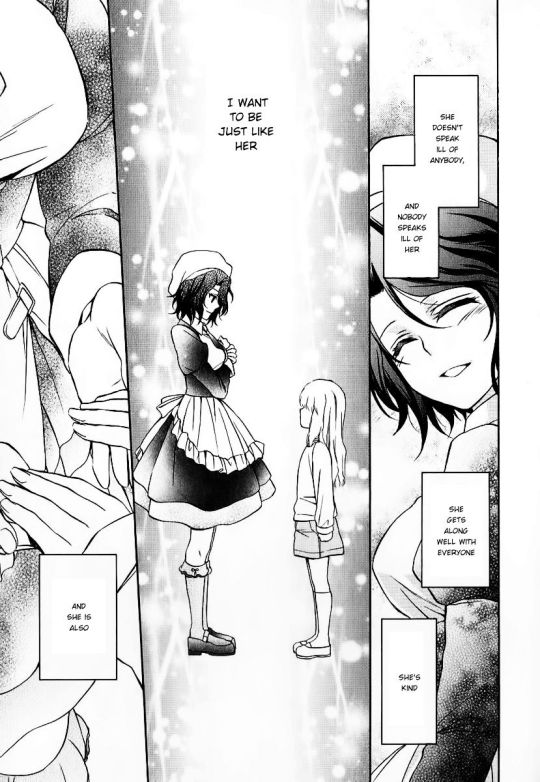


personally i believe the long blonde haired design is really just there for the audiences sake to solidify the connection to lion (and separation from shannon). within the context of clair being the one telling the story it feels even more obvious that this is another obfuscation of the truth…the biggest indication of this within the text itself wld be that when bern’s “ripping out the guts” in the ep 7 tea party

and sayo is notably not depicted with the long blonde hair for the first time in the entire text so far
blonde sayo is a lie made up so as to keep her from reaching her full potential as a crazy brunette
#topic: sayo#i think on some other level ppl got attached to the design/thought it was cool and ran with it#since there was a good 2 years between the appearance of blonde sayo in requiem and the release of confession#(which definitively closed the catbox on sayo’s hair color (BRUNETTE))#ive seen ppl try and make both fit saying that she WAS blonde but the hair darkened as she got older but like.#if genji was worried her age might make her suspicious i can tell u rn a random blonde blue eyed servant out of 20 japanese ones wld be#setting off so many alarms in a family where its suspected the head had an affair with a blonde blue eyed woman. like lets be forreal here#Sorry for this long addition!! i was also seriously confused where it came from at first bc it didn’t seem coherent w the themes…
14 notes
·
View notes
Text
blonde sayo is a lie made up so as to keep her from reaching her full potential as a crazy brunette
#umineko spoilers#Grips your shoulders The potency of the pain of sayo looking so little like beatrice is soo juicy. And you choose to water it down for what#I think sayo should look in the mirror desperate for any sign of beato and only find kinzo looking back. sorry for being a tragedy enjoyer.#sorry this is a matter close to my heart. blonde sayo isnt real she cannot hurt me everyone fell for the ep 7 sugarcoated veil she put on#long blonde haired sayo is to liken her to lion. who sayo also made up as an ideal in the same vein as beatrice. its all an illusion#ive talked abt it in greater detail before but it just makes so much more thematic sense for her to not be blonde or blue-eyed…sigh#.me#topic: sayo#me: wow umineko has so many interesting subjects to explore and analyze. unfortunely i must make a 3rd post in regards to sayo’s hair color
14 notes
·
View notes
Text
so sad lion + battler cousin shenanigans were never shown in ep 7…
#.me#im not as attached to lion as a character as ik some other ppl are but wehhh they are my friend. also happy new year#umineko spoilers
5 notes
·
View notes
Text
#umineko spoilers#umineko#.me#poll#i saw someone on twt call him a dumbass for falling into it despite allegedly knowing everthing there was to know as game master#which made me realize not everyone seems to think he did it on purpose/had a reason for avoiding the truth#so i’m curious how many people think that way :-)
3 notes
·
View notes
Text
ik every time someone denies beatrice’s existence and maria gets upset and insisting she does exist sayo smiles to herself like Yes fight for my honor my psionic warrior
#.me#maria and beato’s relationship is a high point for me in the novel like aughhhhh my two girls who have gone through everything#and thts even before u bring the rosa/kuwatrice parallels into it like Wahhghghh#umineko
17 notes
·
View notes
Text
my #truth:
ep 1 = ep 7 (beatriceless)
ep 2 = ep 6 (furniture)
ep 3 = ep 5 (tools)
ep 4 = ep 8 (ange focus)
#.me#umineko#weird fucked up mirror structure tht barely makes sense. but i will try to explain in the tags regardless#ep 1 and 7 revolve entirely around beatrice without her actual presence#if anything in both it’s her lack of presence that sets the mystery of the episode in motion#one is the introduction to her story and the other is the conclusion of it. fairly straightforward tbh#ep 2 and ep 6 again have very obvious similarities in that they are both shkanontrice episodes#we also have the starting point and ending point of beabato’s relationship. starting with biting and killing and ending with marriage. waho#battler’s first real gameboard vs battler’s last real gameboard. i cld go on but the shkanontrice focus is probably the meat of it#ep 3 and 5’s connection is a bit looser… ep 3 is the first to introduce the braun tubes/catbox to fight using antifantasy#and ep 5 gives us the decalogue to fight using mystery. both give battler/the player tools to understand the rules of beato’s game#we also get ronove/virgilia on one hand and erika/dlanor on the other which are extensions of the tools/concepts themselves#ep 4 and 8 is self explanatory. theyre the Ange episodes and the endings of their respective arcs. both begin and end with ange’s journey#and her trying to find the truth. really theyre so similar in theme (+ content tbh) it is probably the most obvious of these#anyways. it is an actual mirror structure if you consider 4 + 8 as epilogues… <— strying to make it work.#thinking abt umineko at 8 am the grind never stops *trips falls dies
16 notes
·
View notes
Text
“is the culprit the head, one of the siblings, one of the cousins, or one of the servants?” well yes!
sorry just thinking about how sayo is all of umineko
7 notes
·
View notes
Text
sorry just thinking about how sayo is all of umineko
7 notes
·
View notes